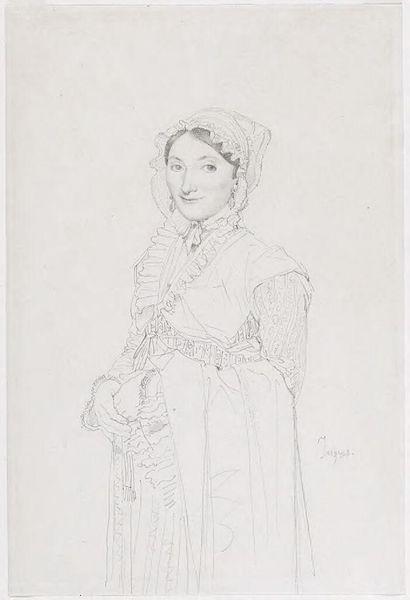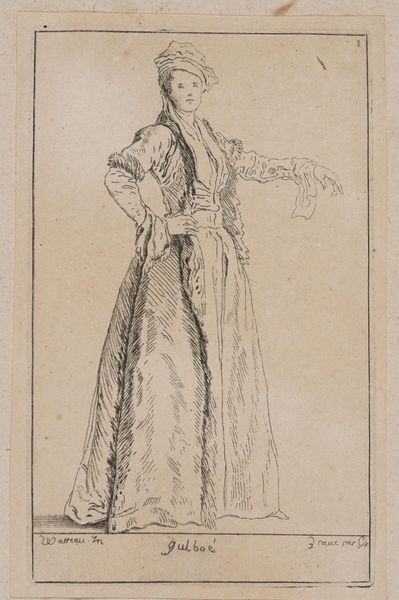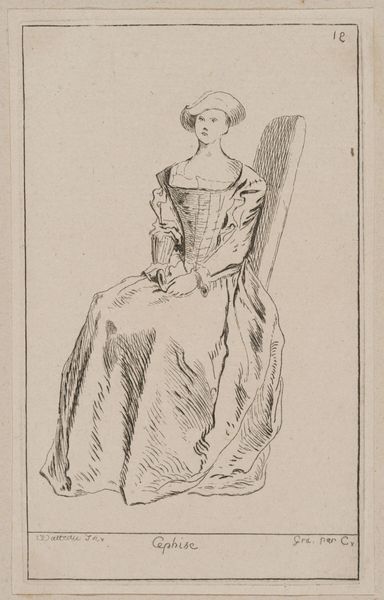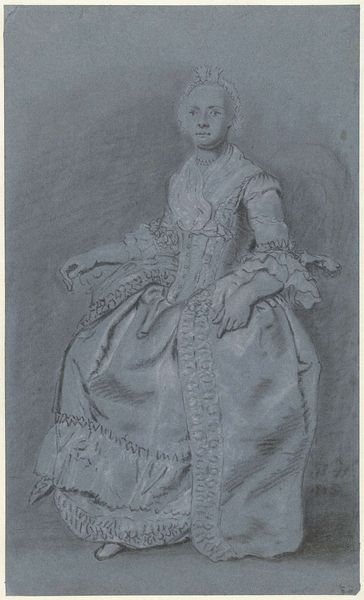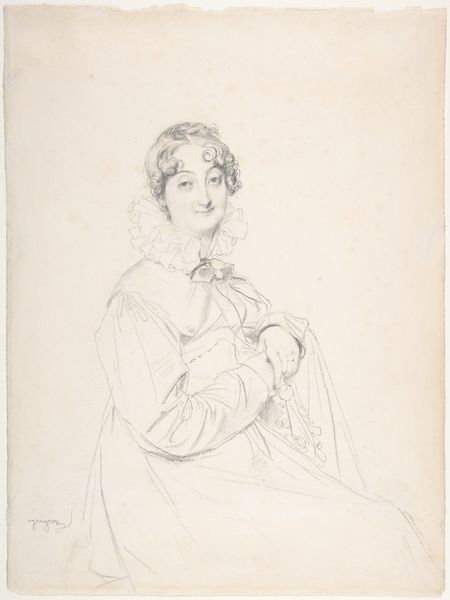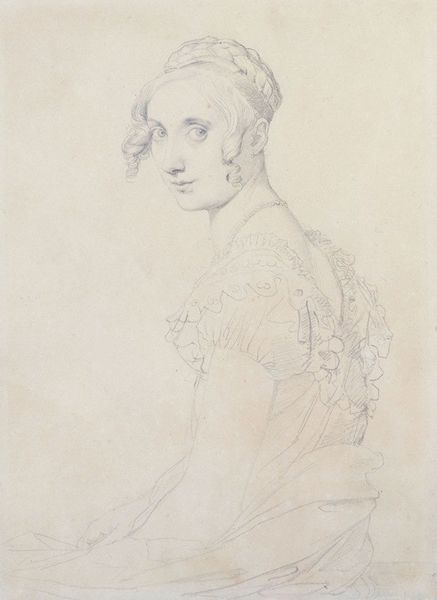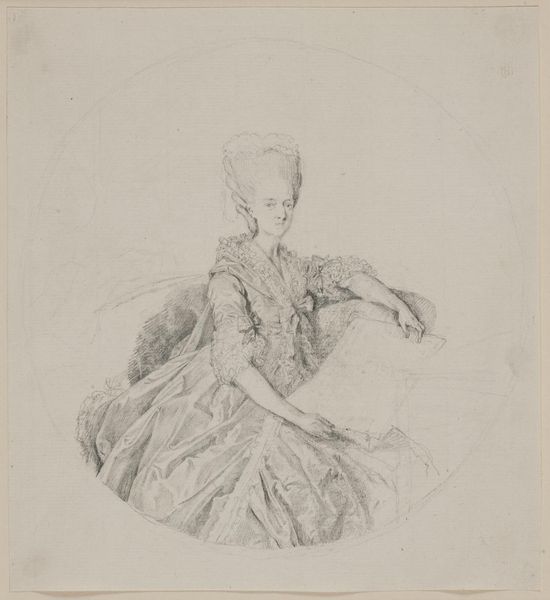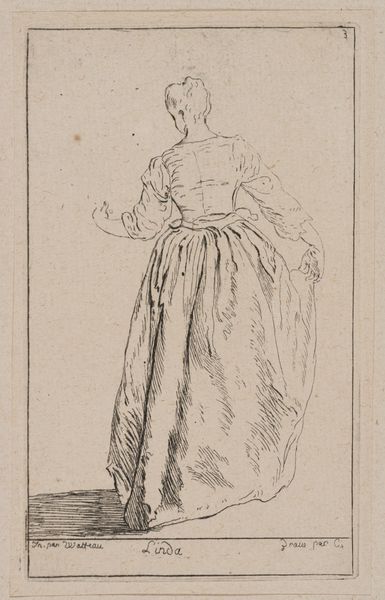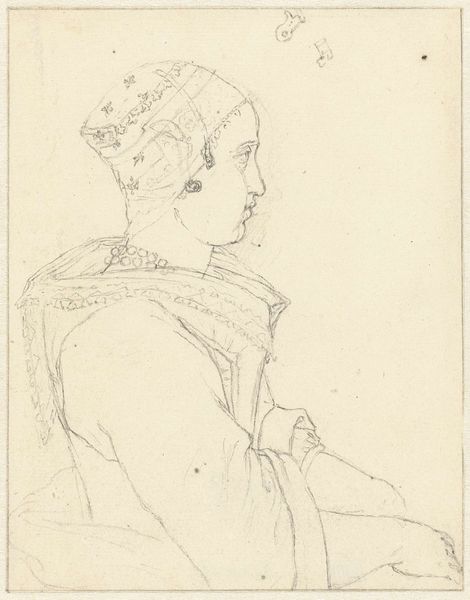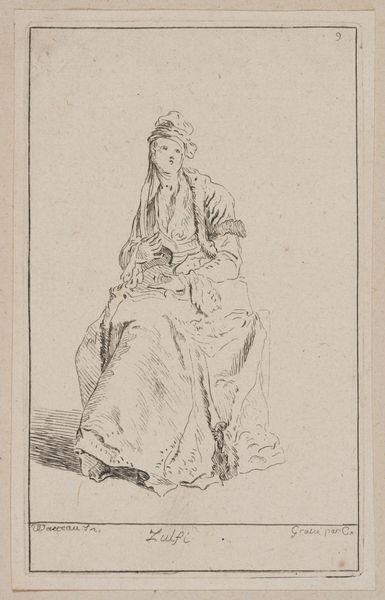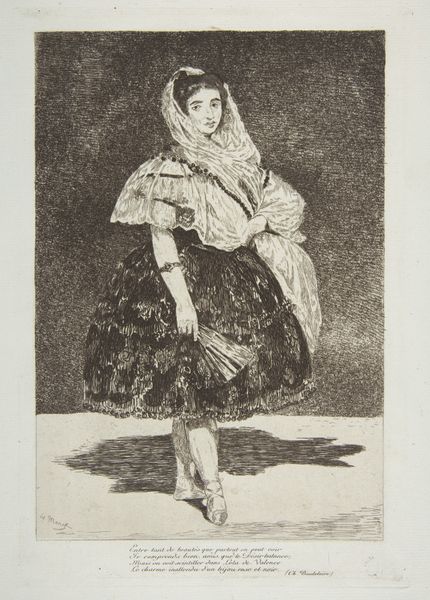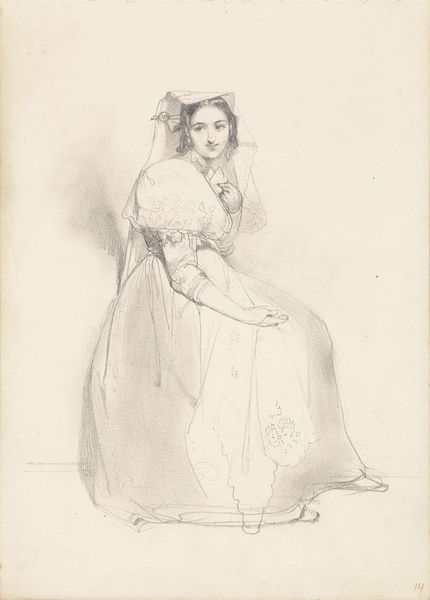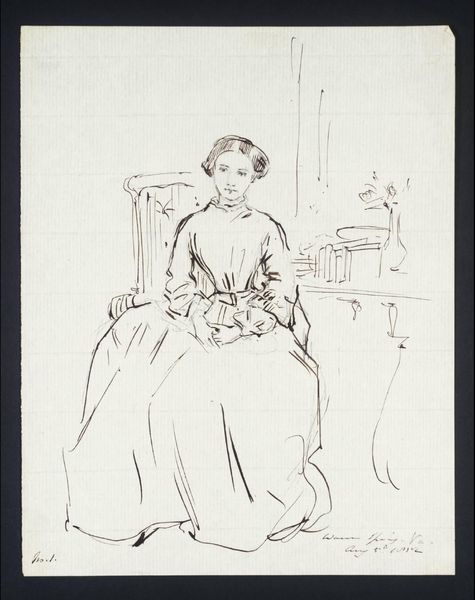
print, etching
#
portrait
# print
#
impressionism
#
etching
#
portrait drawing
#
academic-art
Copyright: National Gallery of Art: CC0 1.0
Curator: Right, let’s spend a little time with this print by Ernest Haskell, entitled "Amelia." Haskell was a well-regarded American artist, and this work showcases his mastery of etching, a technique allowing for incredibly fine detail. Editor: Oh, she’s gorgeous, isn't she? It's like looking into a ghostly memory. Her elaborate gown practically shimmers, yet there's something almost wistful, melancholy about her profile. Curator: Haskell was deeply involved with the art world, from commercial work to exhibiting in influential galleries like Stieglitz's "291." He aimed to capture the spirit of his sitters and his time. One aspect of the setting surrounding Haskell's art creation and that of his contemporaries in late nineteenth-century America were debates about beauty, class, gender, and power dynamics within elite cultural spheres. Editor: The level of detail is astonishing. Look at the lacework, the folds of her dress, even the way the light catches in her earrings. It feels like I could reach out and touch it...or maybe she would simply vanish like an apparition. I get the feeling this portrait wants to communicate something delicate. Curator: What strikes me is the clear sense of how this piece reflects the cultural currents of the time. Haskell worked in a period where the status of women was in great transition, and was clearly immersed in these important considerations. And printmaking itself held a vital democratic role, offering access to art beyond the elites, thereby influencing how identity and beauty were disseminated across social lines. Editor: That resonates. The accessibility makes it feel personal, immediate. If this was a painting, somehow larger and imposing, I might feel intimidated by the subject's class and wealth. But, etched, the artwork seems to invite a kind of conspiratorial sharing of inner feelings. It captures the complex dance between what one wants to portray to the world and perhaps some hidden sadness that she might be confronting. Curator: Haskell's technical prowess and attention to capturing the zeitgeist offer a complex look at art’s multifaceted engagement within cultural history. "Amelia" allows a critical evaluation of the portrayal of women and the accessibility of artistic expression at the time. Editor: Yeah. Thinking about that, looking at Amelia here—she has so much ornate detail about her clothing, which seems fitting as a way to make these social commentaries that reach an intimate tone that you spoke of. I think I like her a lot. Thanks!
Comments
No comments
Be the first to comment and join the conversation on the ultimate creative platform.
